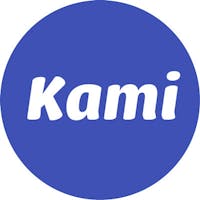Remember the many hours you used to spend preparing and printing documents each week, only to watch them make their way from students’ desks to the floor, the trash bin or the bottom of their backpacks? This was the reality for teachers living in the paper era.
Today, the concept of a paperless classroom is more than just a trend. Schools across the country are now opting for apps and other software as a replacement for traditional pen and paper. And as technology improves, so do the benefits for teachers, schools and, most importantly, students. Here are the most compelling reasons to go paperless:
1. Teachers Can Save Time
Not having the right resources costs educators precious hours. The process of printing documents, making copies and distributing them to students is a perfect example.
The traditional system of printing all our classroom learning materials is both chaotic and inefficient. Students bring their work to class; teachers takes the piles of student work to their home or office and write comments by hand; those same piles of papers make their way back to the classrooms, where they are distributed back to the students.
With a paperless classroom, this three-step method is replaced by a single, seamless process. A PDF annotation app, for example, not only saves time, but it turns literacy and numeracy classroom activities into an interactive experience. My company created just such a tool; Kami lets students and teachers save edited documents in the cloud in just a few seconds. Markup tools like Highlighting, Drawing and Add Text let teachers easily edit PDFs. And students can see these changes and make annotations of their own. It’s easier for everyone to keep track of documents.
Teachers tell us that Kami makes giving feedback on student work a much more efficient process. Jill Nation, a science teacher at California’s Cathedral City High School, was frustrated by trying to print and keep track of students’ work. She also didn’t like wasting so much paper. In the video below, she describes what her experience starting to use Kami’s tools, which she finds “very kid-friendly”.
2. Schools Save Money—and the Environment
K-12 schools spend an average of $50,000 annually on paper and ink costs for printing and copying, as estimated by IT firm NWN. Districts can reduce these expenses by removing printers from classrooms and tracking and limiting paper usage. But NWN also estimated that districts spend an additional $9 on print management—such as repairs and services—for every $1 spent on printing. Tackling these costs requires a fundamentally different approach to preparing and sharing school work.
Want to take the next step toward a collaborative paperless classroom? Kami offers a solution.
We’ve found that both teachers and students welcome the opportunity to reduce paper consumption. Ben Sondgeroth is Regional Education Technology Coordinator for the state of Illinois. He used to be a social studies teacher, where he often felt overwhelmed by paperwork and “flooded with PDFs.” In the video below, he explains how apps like Kami let teachers easily annotate existing PDFs, split and merge pages, and save them to Google Drive—all without having to print a single sheet of paper.
3. Students Are More Engaged
If students aren’t motivated or persistent, they often opt out of their own learning. Deborah Leance of California’s Pomona School of Extended Educational Options, says students “don't read things on paper anymore.” Instead, they respond to apps with well designed interfaces. With Kami, she adds, students have a better way to engage with their learning.
Improved engagement is one indicator that the most significant impact of a paperless classroom is on the students inside it. Because the app lets them track, sync and save PDF annotations in seconds, students are able to approach their work with creative freedom. Kami’s Freehand Drawing Tool is a great example of how students can use their imagination and have fun when doing tasks that require creative thinking. The tool gives them the ability to create shapes, solve equations and write words with the color and size of their choice.
Kati Skulski, a teacher at Star Academy in San Rafael, CA, says that for some students, using pen and paper isn’t necessarily the best way for them to approach the writing process. In the video below, she explains that when building sentences or paragraphs, many students benefit from having alternatives. Being able to type on a tablet or write words on a touch-screen device, for example, helps ensure that some students do not "slip away" and lose interest during class. Additionally, establishing a seamless, digital learning environment can help students grow comfortable saving and submitting documents online—which they’ll need to do at college or university.
There’s no doubt that new digital tools can help engage students in their learning. Jill Nation says her students “want to play with Kami,” and find it makes notetaking more fun than it is on paper.
Better engagement—teamed with more efficient and sustainable classroom practices—point to a paperless future.



